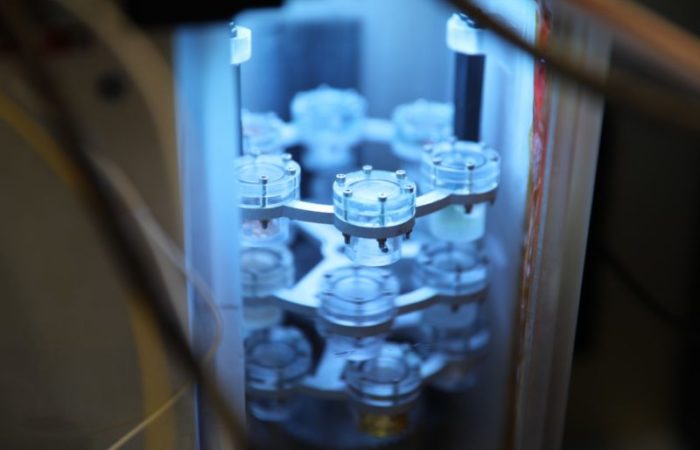Launched on SpaceX CRS-20 – March 6, 2020 BlackBox is a remotely commanded commercial Space Station platform that Nanoracks has been developing for the past few years. The goal: to provide an opportunity for larger and more complex research on the International Space Station. We love working with the astronaut crew on board for so many of our customer projects – but sometimes researchers want to use materials, chemicals, or biological materials that might be risky for astronauts to handle themselves – or maybe, they just need a larger platform to conduct their research…so no matter the case, we’re here to make sure all of our customers dreams are met!
So, our team went ahead and developed “BlackBox” – a locker-size platform that is fully integrated on the ground and all of the research is completely contained – the astronauts never have to get near any potentially hazardous materials – all they do on orbit is plug BlackBox in on orbit for power and data.
BlackBox also allows for multiple experiments to occur simultaneously – all one flight and one mission. So, who better than to complete our first full BlackBox research mission than the MIT Space Exploration Initiative!?
The MIT Space Exploration Initiative 30-day Space Station mission involves several nested experiments inside BlackBox. The individual investigations include biological experiments looking at radiation mitigation via protective pigments, a flight heritage test for DNA analysis tools that may ultimately fly on a future Mars rover, a robotics test of self-assembling space tiles towards a future of autonomously constructed habitats, analysis of a new candidate for deep space exploration nourishment—fermented space food, and an art focused “open call” where artists from around the world submitted small samples for inclusion in their larger payload.
Operations are separate for each payload (each payload is remotely powered on and actuated by the Nanoracks Mission Operations team) and were integrated into the holistic BlackBox unit for command and control.
These nested experiments will explore both fundamental and applied research supporting the future of human spaceflight, representing the diversity of the MIT Media Lab’s Space Exploration Initiative portfolio. Several of these projects directly address research supported by the NASA-guided Translational Research Institute for Space Health (TRISH).
Let’s learn more about the payloads:
Space Terroir: A fermented miso sample that will be biologically characterized and analyzed before and after ISS mission exposure (with a control kept on the ground) to categorize the bacterial colonies, to determine potential for probiotic contribution to astronaut gut health, and to assess shelf-life preservation tools for long duration space missions.
TESSERAE (Tessellated Electromagnetic Space Structures for Reconfigurable, Adaptive Environments): An autonomous, self-assembling robotic swarm of tiles, testing new paradigms for in-orbit construction of satellites and future space habitats. Explores and tests agile mission concepts in orbit, with the aim to support human missions to the Moon and Mars, in addition to space tourism in LEO.
Pigments: Explores the role of protective pigments against the interior Space Station radiation environment and also studying the effect of radiation on certain early-stage development plant life (e.g. seeds)
BioX1: An on-board nanopore genetic sequencer, testing an experiment apparatus for DNA analysis that may become the basis for a future Mars Rover experiment. The experiment will analyze sequencing tools that assist in the Search for Extraterrestrial Genomes (SETG) program—including use of single molecule detection methods for genomics and life detection beyond Earth.
Earthlings: An “open call” artistic payload, sourcing miniature, passive, non-hazardous samples from artists across the world, integrated into a cohesive narrative and deployed in a rotating structure simulating Martian and Lunar gravities, in addition to the Space Station native microgravity.
So yes, we’d say the MIT team is doing some pretty incredible research – and we’re honored to be facilitating this access to space for them. You can read more on the MIT projects roundup page: https://www.media.mit.edu/posts/iss-mission-2020/
What would you do if you could research in space? We’d love to hear. Send us a note at info@nanoracks.com, and let’s talk about how we can make this possible for you!

